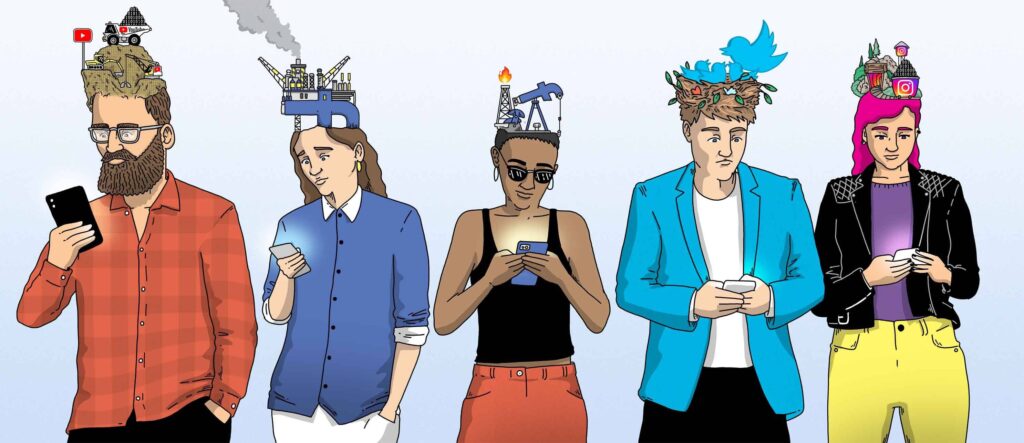The progression from Web 1.0 to Web 3.0 in technology has important consequences for education. Jackie Gerstein’s comparison effectively illustrates the significant potential for change in this transition, encouraging educators to adjust their methods to Education 3.0. As we explore this metaphor, it becomes clear that the shift to Web 3.0 involves more than just adopting new tools; it requires a fundamental restructuring of how we approach teaching and learning.
Education 1.0: Static Structures and Passive Consumption
Education 1.0 reflects the static characteristics of Web 1.0, which include hierarchical systems and passive consumption of content. This paradigm involves the transmission of knowledge from teacher to student in a uniform manner, typically emphasizing memory and standardized assessments. Students are passive consumers of knowledge and lack autonomy in their learning process.
Education 2.0: Collaboration and Interactivity
The emergence of Web 2.0 heralded a paradigm shift towards collaboration, user-generated content, and interactivity. Education 2.0 emphasizes student-centered instruction, project-based techniques, and the integration of digital resources and social media platforms. Educators are starting to use teaching methods that encourage students to take an active role in their learning, promoting collaboration and creativity.
Web 3.0: Personalization and Lifelong Learning
As we transition to Web 3.0, characterized by the semantic web, artificial intelligence, and blockchain technology, education stands on the cusp of a profound transformation. Education 3.0 aims to provide a customized, continuous learning journey that caters to individual needs and interests. The programme focuses on developing essential digital literacy skills, personalized assessment, and engaging learning opportunities using technologies such as virtual reality and augmented reality. 
Impact on Education: Opportunities and Challenges
Transitioning to Web 3.0 offers unique chances for education, such as tailored learning, worldwide connectivity, and genuine real-world experiences. Yet, it worsens current disparities, expanding the digital gap and favoring kids who have technological access and digital literacy abilities. Educators must negotiate this challenging educational situation with purpose, understanding, and a dedication to fairness.
Privileged and Disadvantaged: Navigating the Equity Divide
In the era of Web 3.0, certain students and teachers may find themselves privileged or disadvantaged. Students who are privileged have access to technology, digital literacy abilities, and supportive learning settings, which help them succeed in Education 3.0. Disadvantaged students have obstacles in accessing education due to lack of digital literacy and insufficient support, which exacerbates the equity gap. 
The documentary “The Social Dilemma” on Netflix explores the significant influence of Web 2.0, namely social media, on society. It delves into both the positive and negative implications of the social web, highlighting its influence on individuals, communities, and society as a whole. Comprehending these impacts is essential for educators and policymakers as they deal with the consequences for schools and society.
Further, I would like to discuss the positive influences of Web 2.0 mainly it is Connectivity, Access to Information and Empowerment. Whereas the negatives are Social Comparison and Validation, Surveillance Capitalism and so on.
Implications for Schools and Society:
Digital Literacy: Schools are essential in promoting digital literacy abilities, critical thinking, and media literacy among pupils. Educators need to provide students with the skills to properly traverse the social web, identify trustworthy sources, and assess the veracity of online information.
Social-Emotional Learning: To mitigate the adverse impacts of Web 2.0, schools need to adopt a comprehensive social-emotional learning (SEL) strategy. Educators should focus on empathy, self-awareness, and digital citizenship to encourage positive online interactions, resilience, and well-being in pupils.
Ethical Considerations: Ethical Dilemmas: Society needs to address ethical dilemmas related to the utilization of Web 2.0, such as data privacy, algorithmic bias, and digital ethics. Collaboration among policymakers, educators, and tech businesses is essential to create legislation, standards, and ethical frameworks that prioritize user rights and well-being.
Ultimately, utilizing the revolutionary capabilities of Web 3.0 can help provide inclusive, student-focused settings that enable all learners to thrive in the digital era. This path involves understanding the intricacies of Web 2.0 and recognizing its diverse impact on our lives, which includes both beneficial and detrimental aspects. In order to influence the future of education for future generations, educators and policymakers need to work together with foresight, empathy, and a commitment to advancing responsible digital citizenship and societal well-being. We may work together to engage in a continuous process of learning, creativity, and empowerment, making sure that the internet improves educational opportunities while reducing its negative effects on schools and society. We can create a fair, diverse, and enduring educational environment in the digital era through working together.
Jashan, your post delves deep into the evolution of education alongside the changes in the internet from Web 1.0 to Web 3.0. It’s impressive how you’ve connected the past, present, and future of the web to teaching methods. Education 1.0’s static approach, like the early internet, contrasts with the interactive nature of Education 2.0 and Web 2.0. Now, we’re on the brink of Education 3.0 and Web 3.0, promising personalized learning and exciting tech like AI and VR. Your points about the challenges, like the digital divide, are crucial. It’s clear that educators and policymakers need to navigate this changing landscape with care, focusing on digital literacy, equity, and ethical considerations. Well done!
Thank you for your comment Navneet, As educators, it’s crucial for us to be mindful of the challenges such as the digital divide and to prioritize digital literacy and ethical considerations in our teaching strategies.